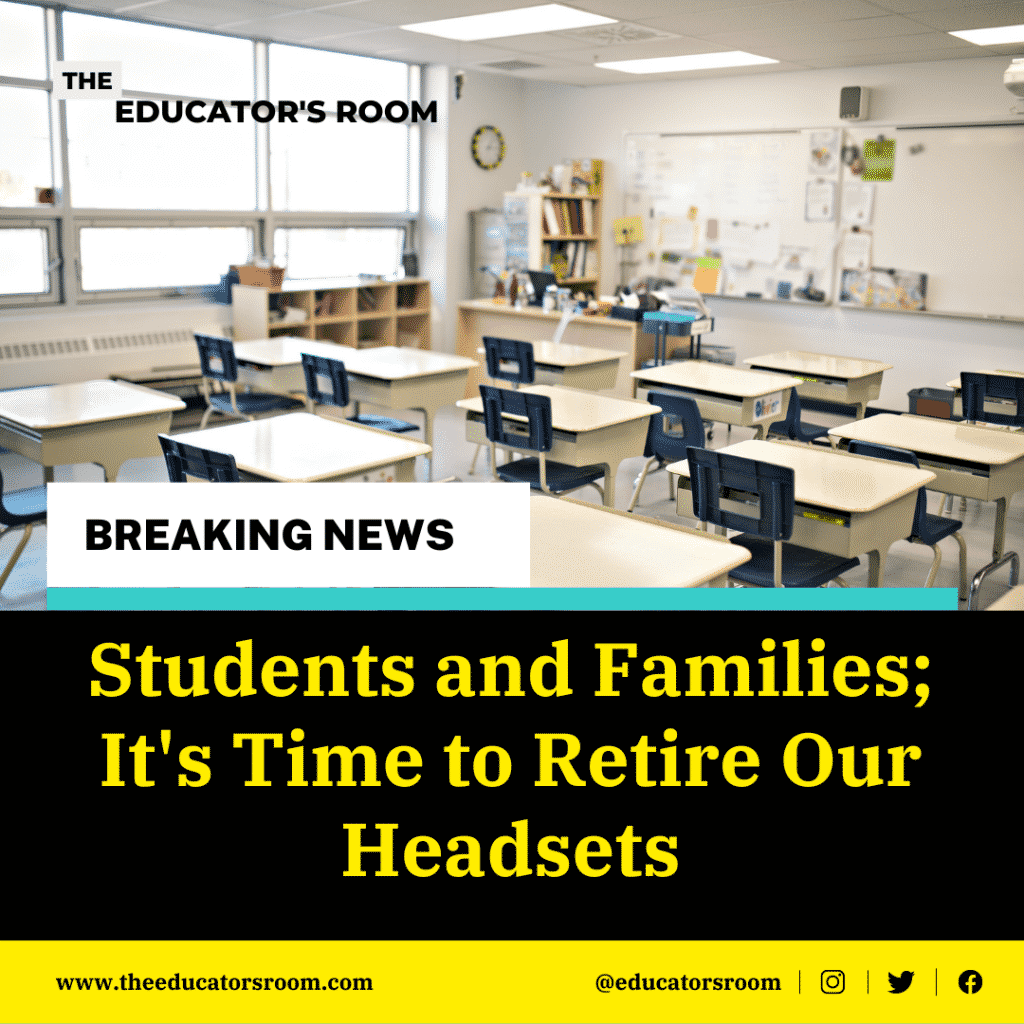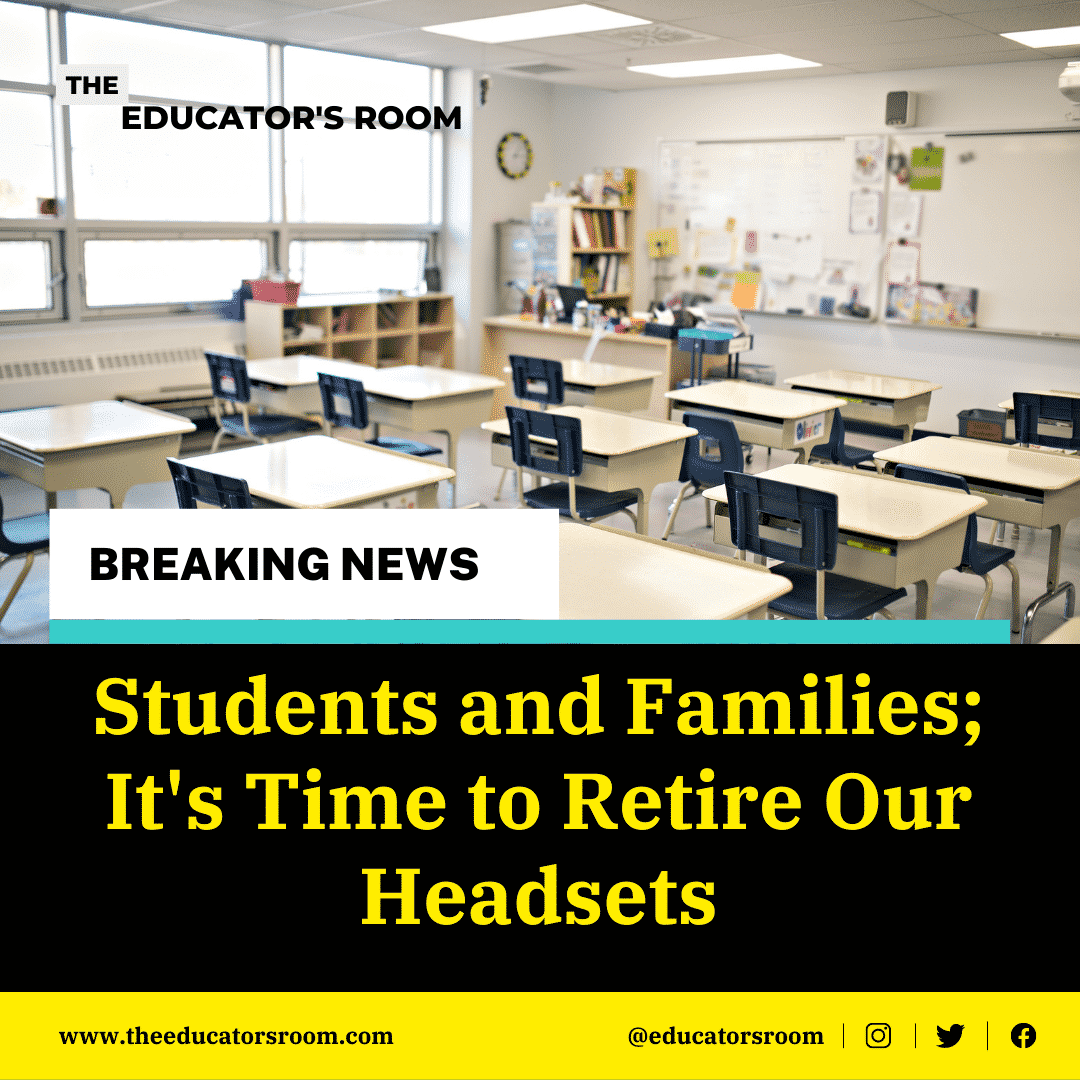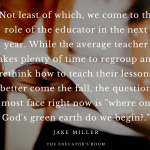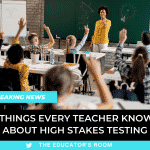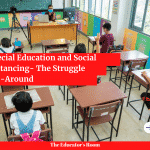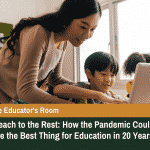Several years ago, I retired as a volunteer firefighter. Soon thereafter, I put my helmet and my badge in a glass case. This year, as a teacher, I ended my last Zoom class. I then took off my headset and I realized that I’m going to be placing it in a glass case too. In fact, I’m retiring from teaching online completely and I’m going back to being a classroom teacher–a real classroom teacher. I hope when you are able, you make the same choice for your child.
I know private charter school companies will soon be knocking on your door, giving you reasons that may entice you to consider keeping your child in a virtual environment. Even my district, San Diego Unified School District, is going to offer you a virtual academy. They’ve also offered positions for classroom teachers like me to teach there. But I’m going to pass. And unless you are concerned about covid-related health, I implore you to pass as well.
You’ve probably read that returning to school, actual school, is now much more safe and full of new and exciting opportunities thanks to federal and state stimulus money. But here are a few other reasons you should retire your child’s headset next year:
I’m a much better teacher in the classroom.
Teaching, in general, has been visible to a much wider audience during quarantine. As a parent myself, I know an awful lot more about my children’s teachers than I would have before the pandemic. But as a teacher, I also know that I didn’t see the instructor’s best. In fact, in many ways, I saw them at their worst.
That’s because teachers were not anywhere near our best online. I know I wasn’t. Surveys nationwide show teachers were not feeling effective nor were they enjoying teaching virtually. In fact, a whopping 27% of those doing so were even considering leaving the profession. Whatever you may have thought of my performance online, rest assured that I am far better in the classroom. I know it, you know it and your children know it.
Virtual education has been tried and should be considered inferior because it is.
Thomas Courtney
Virtual schooling already has a track record in K-12 education and it isn’t pretty. In fact, as far back as 2009, as Race To The Top encouraged large urban districts to allow charters and privatization of more of their schools, virtual programs became cash cows. Drop-out rates soared in these schools, and when disenfranchised families and students returned to public schools, often their funds stayed with the virtual school corporations leaving districts scrambling. In one year alone, 100 million dollars was given to virtual schools. The result? Half of those who enrolled quit to return to other schools, students were packed in classes in some cases as many as 250/1 for high school and 75/1 for elementary, and high school graduation plummeted.
In 2011, the New York Times found that these findings were the norm in every state. With only ⅓ of it’s schools meeting annual yearly progress, virtual programs like K-12 aggressively targeted poorer students making large profits in the process, and not coming close to delivering sound instruction of any kind.
I can’t hold students accountable online but in the class, I can ensure your child understands what I teach and masters the material.
Thomas Courtney
If you have been following the back and forths between school districts and teacher unions about administering state tests in 2020, then you understand no one was quite sure how to do it nor what it would tell us. Officially, districts told teachers that much of what normally was expected of kids would be optional, and it was understandable to a degree. But the truth was that whether a student is showing their video, or on a black screen while playing Call of Duty (but technically in Physics), teachers had no way of knowing until we tested. Importantly, that meant there was no accountability for students who could participate, but chose not to do so.
And testing wasn’t any better. That’s because during the pandemic it was virtually impossible to ensure testing was secure, meaningful and actually gave us good information about our students. But in the classroom, while you are at work, while you are busy, I can make sure your child learns what I am teaching them, just like I used to do. And I can make sure that if they don’t, I’ll teach it to them until they do.
Your child needs to move and socialize.
Whenever I see advertising that suggests that a virtual learning academy offers opportunities to socialize and engage in meaningful ways, I just feel as though I’m watching an infomercial. Yes, compared to no socialization and no exercise, it is true-virtual academies offer some socialization and movement opportunities. But my students, here in my classroom, get more socialization with one another before lunch, then a virtual academy can offer in a month. And if that isn’t exactly what our children need right now, then I don’t know what is.
Furthermore, students in schools move. They play at recess, and they attend PE. Real PE. After a year of isolation and lack of exercise, being back in school is exactly what your child needs in order to socialize and gain their level of fitness back.
And if all of this isn’t enough to make bringing your child back to a brick and mortar school a priority, remember this: Higher education in the United States works very much like a filter, bottlenecking those “racing towards the top” into opportunities for ultimately higher pay. The lasting educational effect of this pandemic will be the impact it has on your child’s ability to compete for places in universities and employment opportunities. When you are able, give your child the best opportunity to pass that filter. Send them back to school where we teach best. The sooner, the better.
